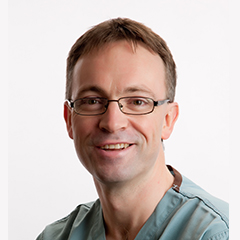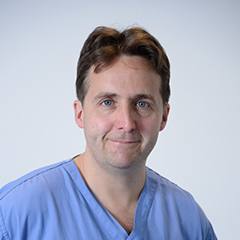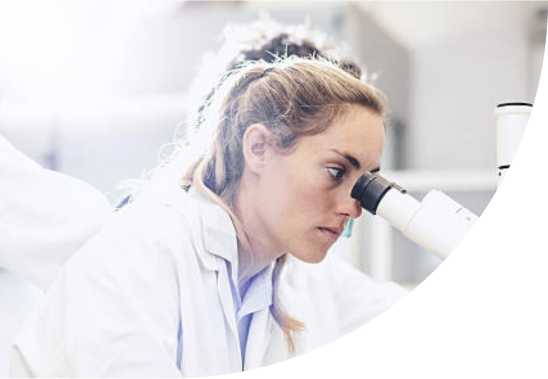Varicose Veins Treatment
Contact Us
Request an AppointmentPlease note a referral letter is required before an appointment can be confirmed.
Please note a referral letter is required before an appointment can be confirmed.
Useful Information
About varicose veins
Vein problems range from tiny thread veins to very big varicose veins complicated by leg ulcers. Any vein may become varicose, but the veins most commonly affected are those in your legs and feet because standing and walking upright increases the pressure in the veins of your lower body.
Varicose veins
Your legs are made up of a network of veins. Healthy leg veins contain valves that open and close to assist the return of blood back to the heart. Venous reflux disease develops when the valves that keep blood flowing out of the legs and back to the heart become damaged or diseased. This can cause blood to pool in your legs and lead to symptoms such as pain, swelling, swollen limbs, leg heaviness and fatigue, skin changes and skin ulcers and varicose veins. Varicose veins are noticeable as knotty bulges under the skin. They appear blue and are usually ¼ inch or larger in diameter and are unsightly and often painful.
A clotted varicose vein causes phlebitis or inflammation of a vein, which is noticeable as hot and red painful skin at the site of the clot. Besides the visible symptoms, physical symptoms are tiredness, restless legs at night, heaviness in the leg, pain, aching, itching, throbbing, swelling, burning or a cramping sensation. There are a number of different surgical techniques used in the treatment and removal of varicose veins. Your surgeon will discuss the option best suited to you and provide you with the information needed to prepare you. Depending on the procedure you may be at the hospital as a day case patient or overnight for a one-night stay.
There are three main treatment options offered by the vascular surgery team at Mater Private which include:
- Phlebectomy
- Sclerotherapy and foam sclerotherapy
- Vein closure procedure
Phlebectomy is a method of surgical removal of veins and is often referred to as ‘vein stripping’.
How it works
Tiny incisions are made down the leg over the surface of the veins. The small veins are then removed through these incisions. The incisions are small skin punctures which following the procedure are covered with steri-strips; normally there are no stitches. After the vein has been removed by phlebectomy, a bandage and/or compression stocking is worn for a short period of time.
After the procedure
You will remain in hospital for four to five hours after the operation until you are fully recovered from the anaesthetic and have taken in some food and fluids. You will be able to mobilise to the bathroom with the assistance of a nurse.
Your leg will be heavily bandaged. This bandage is applied to limit bruising and swelling of the leg and will remain in place for 48 hours. You may also have a dressing in your groin area. It is important that you do not get these bandages or dressings wet.
Some discomfort and bruising of the legs can be expected after the surgery. Common pain relievers generally help to reduce this discomfort. Most people are able to return to work within a few days.
One day following the procedure you can expect to take walks indoors around the house, slowly increasing the length of the walks. Do not walk long distances on the first day. Elevate your leg while resting and only increase the length you walk each day to a level you are comfortable with.
Sclerotherapy is a procedure used to treat varicose veins and spider veins and improve their appearance.
How it works
This involves the injection of sclerosant (injectable treatment) into the affected vein. This has the effect of sealing the vein and overtime the body absorbs the vein.
The procedure takes about 20-30 minutes.
After the procedure
Mild discomfort may occur following the procedure and a cramping sensation may be felt for one to two minutes when larger veins are injected.
The number of veins injected in one session is variable, depending on the size and location of the veins. Anywhere from one to several sclerotherapy sessions may be needed for any vein region.
Following the procedure, you are required to wear a venous compression stocking for two weeks. A bandage will be applied over the stocking and will remain for one week.
Suitable candidates
Most patients with small or moderate sized varicose veins are suitable for sclerotherapy.
Foam sclerotherapy is also suitable for patient with varicose veins. However, it is a relatively new treatment and at present, the long term results are not yet known and it’s not possible to say how this treatment compares in terms of results with conventional surgery or sclerotherapy.
The main difference between sclerotherapy and foam sclerotherapy is that in sclerotherapy treatment, the solution is injected into a vein in its liquid format. However, with foam sclerotherapy, air is mixed with the sclerosing agent to achieve a consistency similar to shaving cream.
It can used to treat some of the larger underlying abnormal veins which would not normally be treated with conventional sclerotherapy.
The VENEFIT™ closure procedure, is one of the new minimally endovenous catheter based techniques and is an alternative treatment option to traditional vein stripping surgery. This procedure is a more minimally invasive treatment option and uses ‘thermal energy’ to shrink the vein wall of the affected vein and to seal it closed. Once the vein is closed the blood supply naturally re-routes through other healthy veins.
How it works
Using an ultrasound for guidance, your doctor places a catheter into the diseased vein through a small incision in the skin. The catheter is powered by radio-frequency energy which delivers heat into the vein wall. The heat shrinks and collapses the vein. The catheter is withdrawn, closing the vein. The catheter based techniques will often be combined with phlebectomies - a minimally invasive procedure used to remove varicose veins on the surface of the leg.
Once completed, a bandage and if necessary, compression, is placed over the incision site.
You will be encouraged to walk but to refrain from standing and participating in strenuous activities for the recommended period of time. Typically patients resume normal activities within a day.
Patients report little or no pain associated with this procedure.
Suitable candidates
The vascular surgeon will initially carry out an ultrasound scan on your leg to determine if you are a suitable candidate.
Not everyone is suitable for this procedure. Large, winding veins and recurrent varicose veins after previous surgery are often unsuitable.
Our consultants in Dublin


Our consultants in Cork
/mr.-tahir-khan-.png?sfvrsn=49bce4c5_1)
/mr.-max-mahendran.png?sfvrsn=236e3ac8_1)
/mr.-gerald-mcgreal-.jpg?sfvrsn=8533f724_1)
/mr.-gavin-o'brien-.png?sfvrsn=6109fe3f_1)







.jpg?sfvrsn=bc97231b_1)



